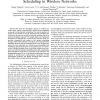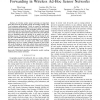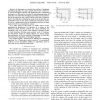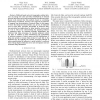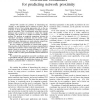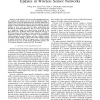INFOCOM
2008
IEEE
14 years 6 months ago
2008
IEEE
—We introduce the concepts of monitoring paths (MPs) and monitoring cycles (MCs) for unique localization of shared risk linked group (SRLG) failures in all-optical networks. An S...
INFOCOM
2008
IEEE
14 years 6 months ago
2008
IEEE
—In this paper, we study a new class of attacks, the invisible LOCalization (iLOC) attack, which can accurately and invisibly localize monitors of Internet threat monitoring (ITM...
INFOCOM
2008
IEEE
14 years 6 months ago
2008
IEEE
—Cognitive radio presents a new approach to wireless spectrum utilization and management. In this work, the potential performance improvement gained by applying cognitive radio t...
INFOCOM
2008
IEEE
14 years 6 months ago
2008
IEEE
Abstract—We study the throughput capacity of wireless networks which employ (asynchronous) random-access scheduling as opposed to deterministic scheduling. The central question w...
INFOCOM
2008
IEEE
14 years 6 months ago
2008
IEEE
—In wireless ad-hoc sensor networks, an important issue often faced in geographic greedy forwarding routing is the “local minimum phenomenon” which is caused by deployment ho...
INFOCOM
2008
IEEE
14 years 6 months ago
2008
IEEE
—In this paper, we consider the problem of designing scheduling algorithm for input queued switch that is both fair as well as throughput optimal. The significant body of litera...
INFOCOM
2008
IEEE
14 years 6 months ago
2008
IEEE
Abstract—Multicast-based network tomography enables inference of average loss rates and delay distributions of internal network links from end-to-end measurements of multicast pr...
INFOCOM
2008
IEEE
14 years 6 months ago
2008
IEEE
INFOCOM
2008
IEEE
14 years 6 months ago
2008
IEEE
—We consider the problem of determining the “closest”, or best Internet host to connect to, from a list of candidate servers. Most existing approaches rely on the use of metr...
INFOCOM
2008
IEEE
14 years 6 months ago
2008
IEEE
—Code updates, such as those for debugging purposes, are frequent and expensive in the early development stages of wireless sensor network applications. We propose AdapCode, a re...

